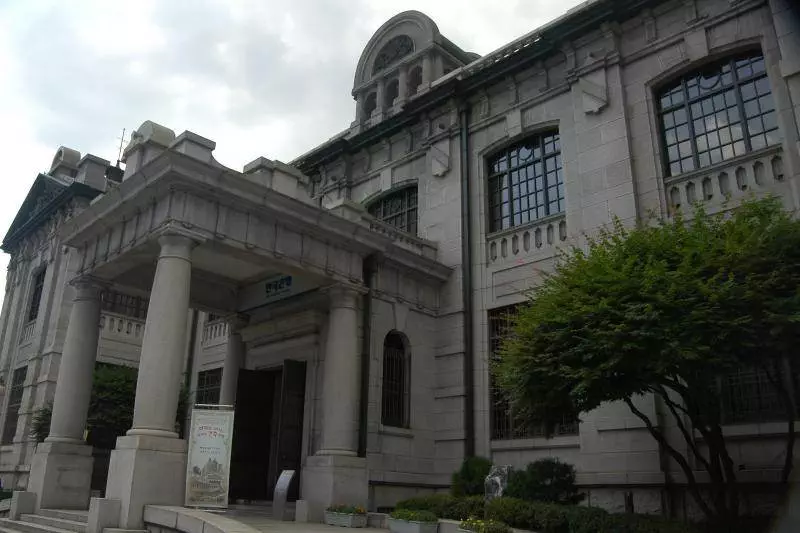
Don’t be too surprised that I’m fascinated by money. A museum of money? Sure, it’s a fairly touristy place in downtown Seoul, but still somewhere I needed to check out.
First established on June 12, 1950, the Bank of Korea began functioning as a central bank in the turmoil following World War II. Within a month new banknotes were issued:
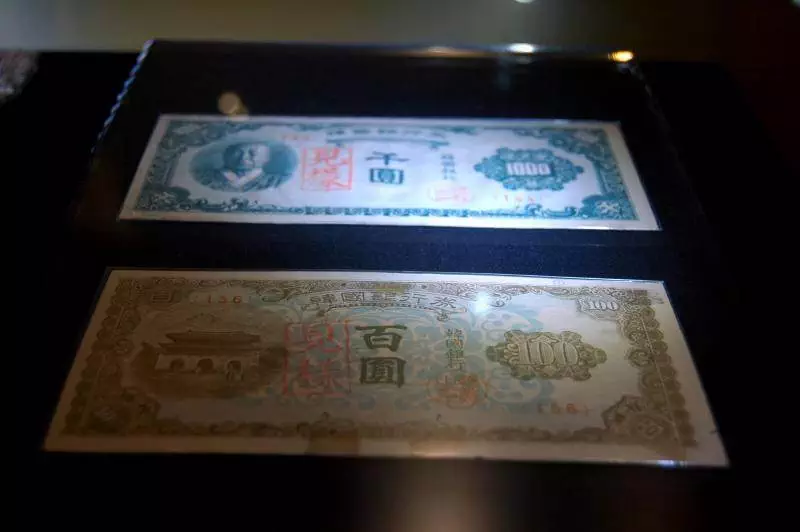
The other 60 years of history are more interesting when seen in person.
Some of the exhibits show the detailed steps that go into making the banknotes — these days there’s a lot more going on here:
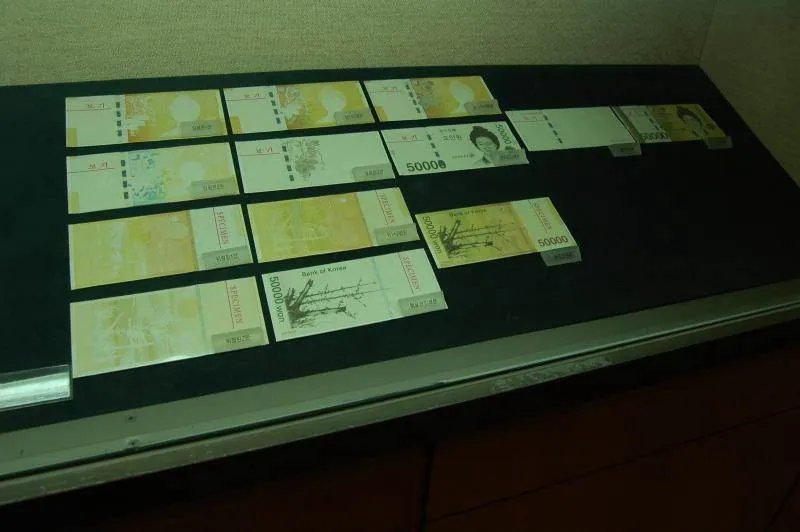
South Korea’s recently released 50,000 won bill (about $42 USD) in different stages of creation. Don’t bother thinking of taking anything — besides being encased in glass and having CCTV cameras on you, the 보기 (specimen) marking would be hard to ignore.
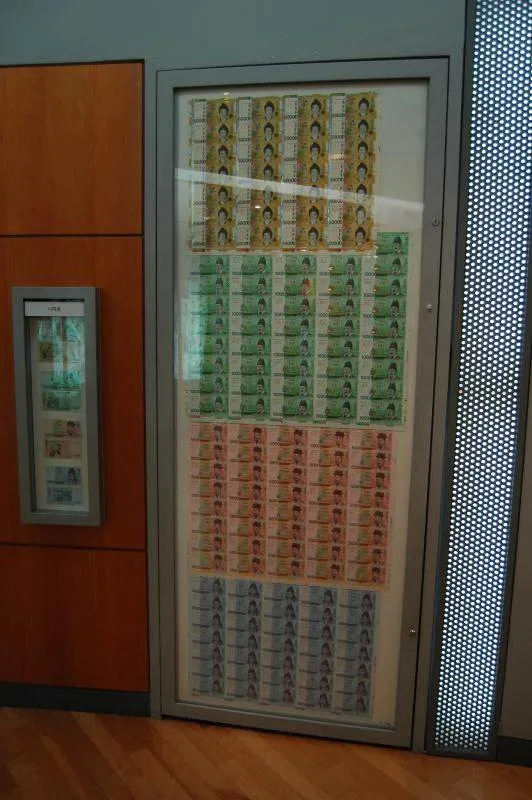
Full, uncut sheets — definitely a collector’s item to some, or just a fun way to show the colors and designs of Korea’s four denominations.
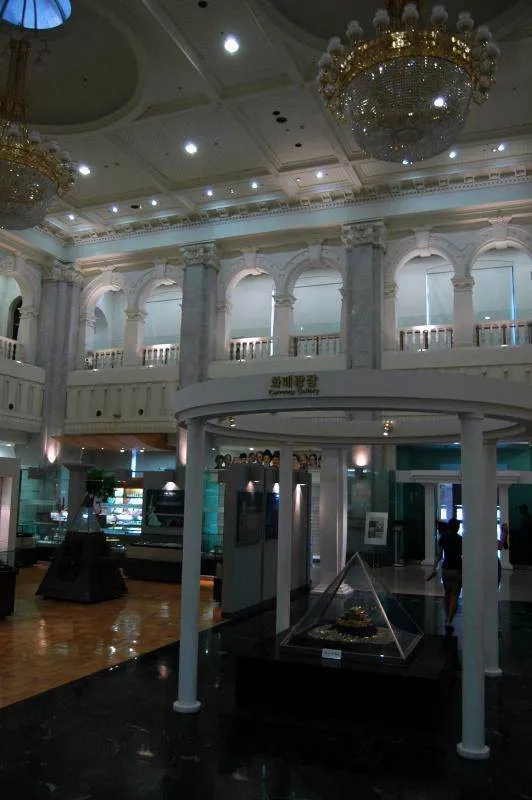
The building itself is gorgeous — although it’s been renovated, the institutional feeling remains, thanks possibly to the classical construction. The chandelier adds a bit of ballroom flair — and made me feel underdressed in shorts and a t-shirt.
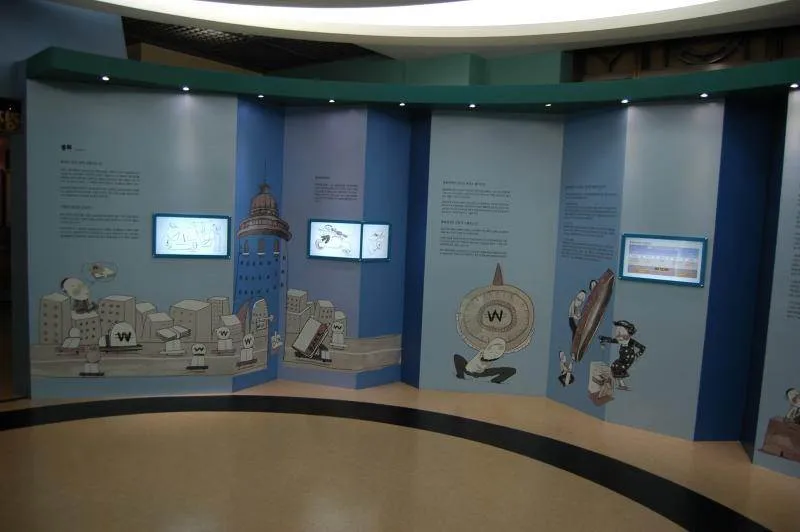
A number of displays are field-trip and children-friendly. Some information is available in English, but most is available in Korean.
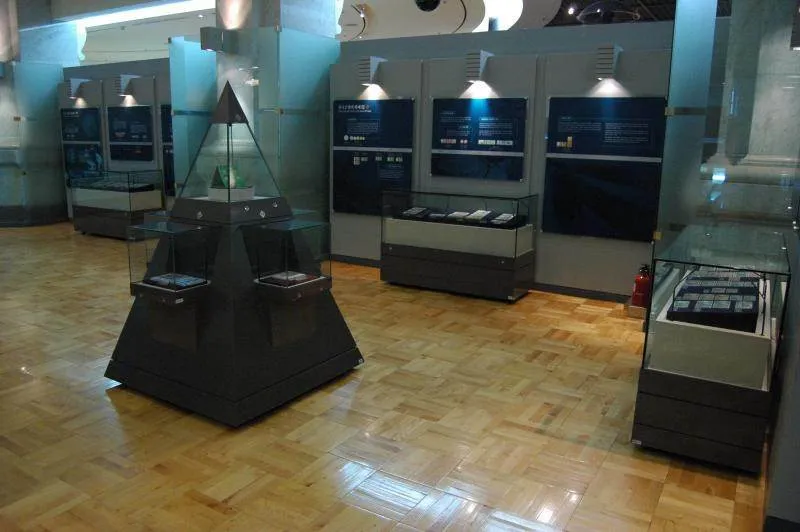
In addition to showing Korea’s current currency, two sections on the ground floor show a number of Korean, Japanese, and Chinese bills and coins. A few Chinese coins date back to 2nd century B.C. — the descriptions are all in Korean, so it’s hard to tell you much more than that.
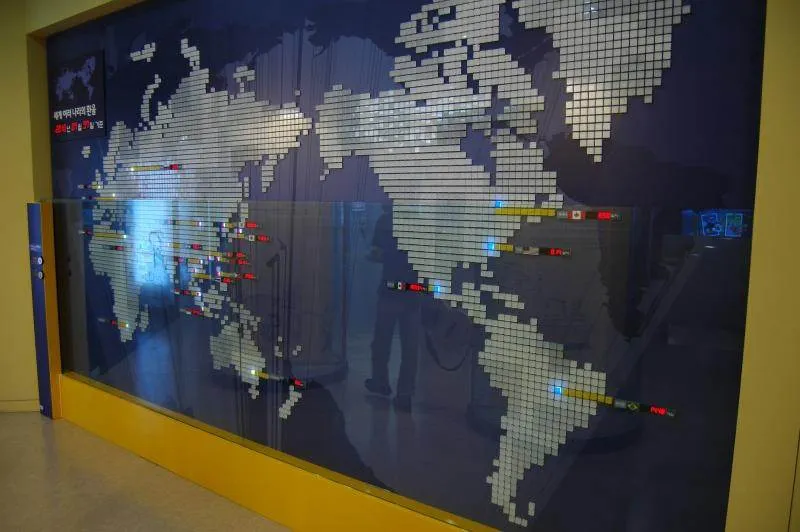
Now here’s a useful element: see how far 10 US dollars or 10,000 Korean won goes in currencies across the world.
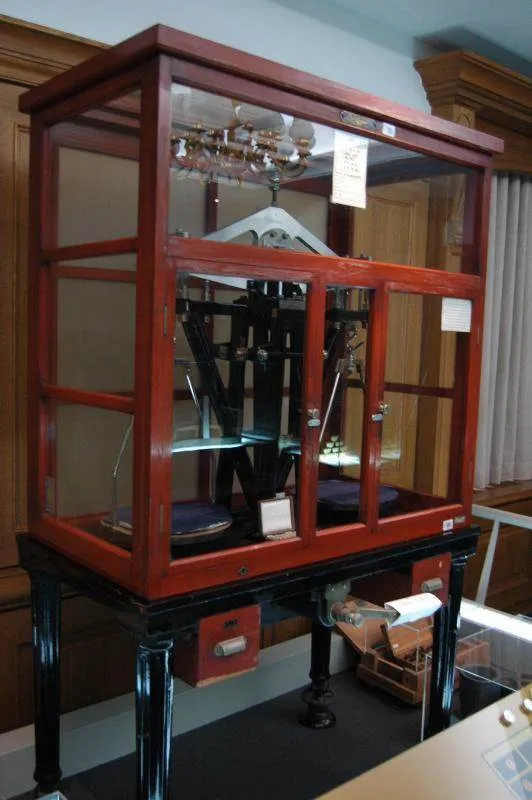
One of a number of machines designed to measure precious metals. Other machines displayed were currency counters or processors — some of them with the front cover taken off so you can see all the conveyor belts.
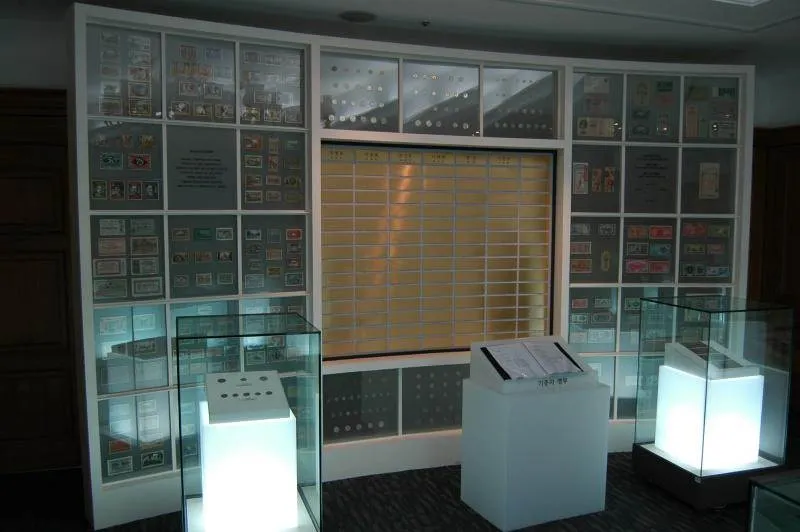
A number of donated currencies from countries across the world — some of which are proofs and uncirculated coins and bills you’re unlikely to see outside of a collectors’ case.
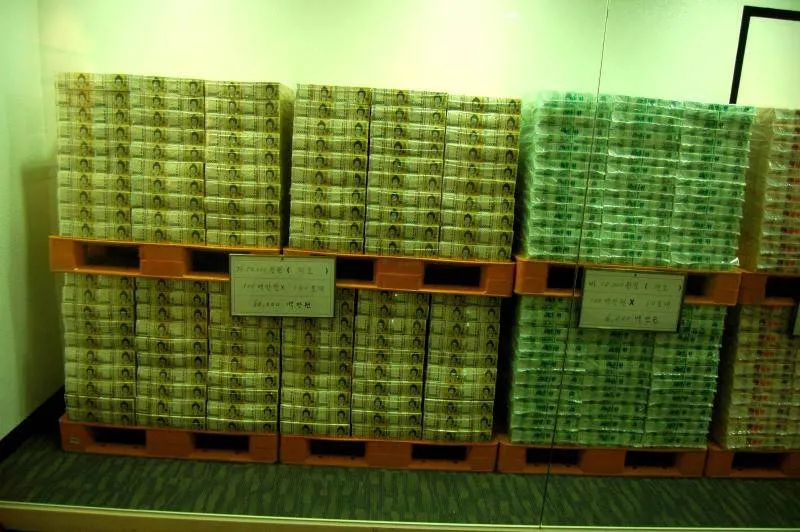
Yes, that is exactly what it looks like — packs and pallets of 50,000 won bills. If the marking is to be believed — 60,000 백만원 — that’s 60,000,000,000 won (over 50,000,000 US dollars) of the gold bills alone.
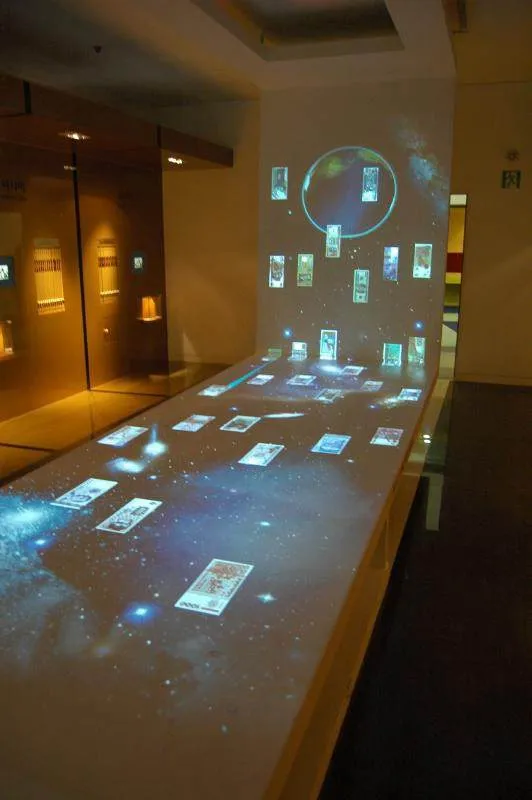
A touch-screen waterfall of money — touch any given bill and learn about the banknote and country of origin. It’s gimmicky, but fairly cute.
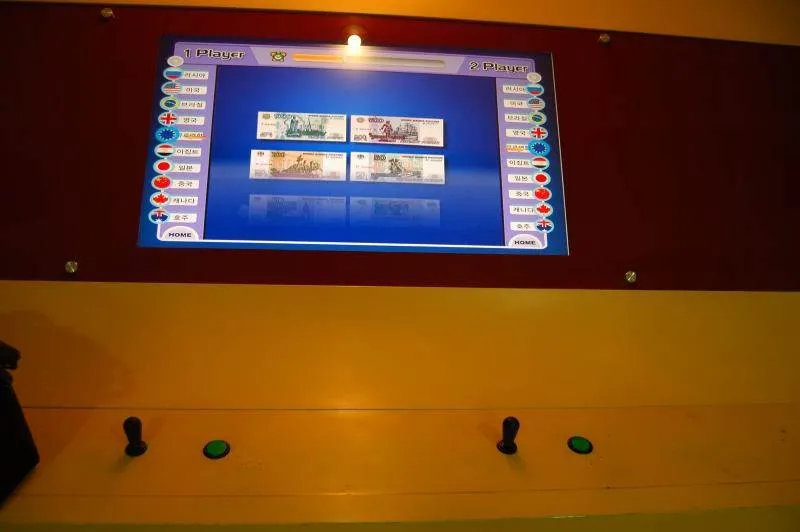
A two player game where the players try to match the currency to the country. It’s all in Korean, but there are flags to help the identification process. If you’ve been trying to practice your hangeul (Korean alphabet), this is a good chance to learn some more.
If you’re a tourist coming to Korea and you’re staying in downtown Seoul, it’s worth stopping by for an hour or so. Living in Korea? Make it a stop sometime during your time here, especially if you have kids. Just because it’s in downtown doesn’t make it a ‘must-see’ place, however.
Directions to the Bank of Korea Museum: three subway stations are roughly equidistant from the Bank of Korea Museum — City Hall station (line 1 or 2, exit 7), Euljiro-1-ga (line 2, exit 7), and Hoehyeon station (line 4, exit 7). You could follow the posted maps throughout this area of town; otherwise, the simplest way is probably from Euljiro’s station. Take exit 7 to street level, then follow the main road to the large intersection about 350 meters. Open Tuesdays — Sundays 10am — 5pm; free admission. Wheelchair-friendly; assistance available with prior arrangement; call 02–759–4881 for more information.


